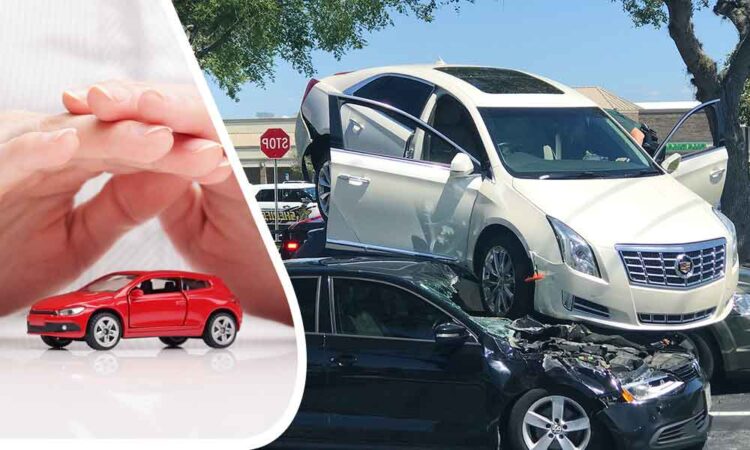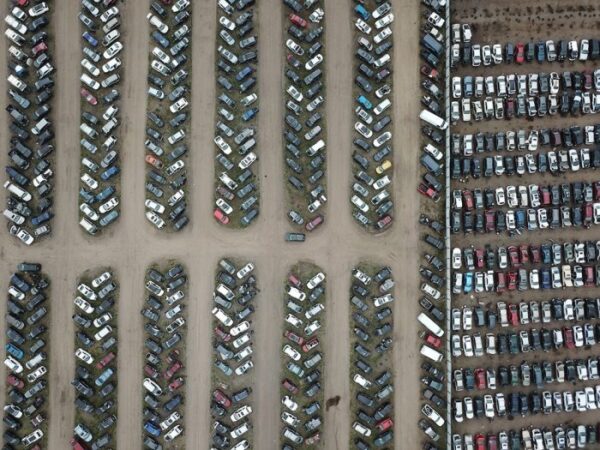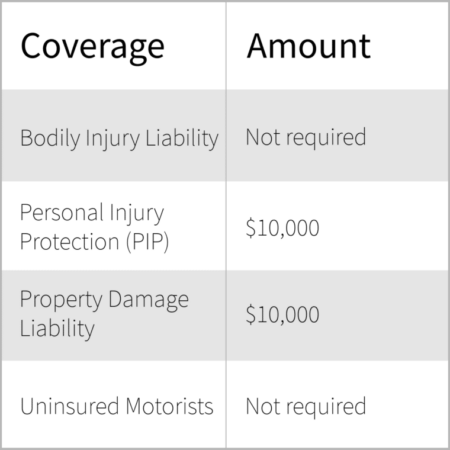
How do insurance companies determine total loss value? It’s a question that arises when a car is damaged beyond repair, leaving you wondering how much compensation you’ll receive. The process is complex, factoring in various elements like depreciation, market value, salvage value, and even the vehicle’s condition. This article delves into the intricate world of total loss calculations, unraveling the mysteries behind the numbers.
Insurance companies use a combination of methods to determine the total loss value of a vehicle. These methods include assessing the vehicle’s condition, considering its age and mileage, and comparing it to similar vehicles in the market. They also take into account the cost of repairs, the availability of parts, and the potential salvage value of the vehicle. The goal is to arrive at a fair and accurate value that reflects the vehicle’s worth at the time of the accident.
Factors Influencing Total Loss Value
Insurance companies determine the total loss value of a vehicle by considering various factors, including the vehicle’s condition, age, mileage, market value, and salvage value. These factors are crucial in establishing a fair and accurate compensation for the vehicle owner in case of a total loss.
Depreciation
Depreciation is a significant factor that influences the total loss value. Depreciation is the decrease in value of an asset over time due to wear and tear, obsolescence, and market factors. As a vehicle ages, its value declines. Insurance companies use various methods to calculate depreciation, such as:
– Straight-line depreciation: This method assumes a constant rate of depreciation over the vehicle’s lifespan.
– Accelerated depreciation: This method assumes a higher rate of depreciation in the early years of the vehicle’s life.
– Actual cash value (ACV): This method considers the vehicle’s current market value, taking into account its age, mileage, condition, and other factors.
The total loss value of a vehicle is often calculated by subtracting the depreciation from the vehicle’s original retail price.
Market Value
The market value of a vehicle is another crucial factor in determining the total loss value. Market value refers to the price at which a vehicle can be sold in the current market. Insurance companies use various sources to determine the market value, including:
– Used car pricing guides: These guides, such as Kelley Blue Book and Edmunds, provide estimated values for vehicles based on various factors, including make, model, year, mileage, condition, and location.
– Online marketplaces: Websites like Craigslist, eBay, and AutoTrader offer a platform for buyers and sellers to interact, providing an indication of the current market value of vehicles.
– Auction results: Auction houses specialize in selling used vehicles, and their auction results can provide insights into the market value of vehicles.
Salvage Value, How do insurance companies determine total loss value
Salvage value refers to the estimated amount that an insurance company can recover by selling the damaged vehicle after a total loss. The salvage value can vary depending on the extent of the damage and the vehicle’s overall condition. Insurance companies may use various methods to determine the salvage value, including:
– Auctioning the vehicle: The insurance company may auction the damaged vehicle to a salvage company or individual.
– Estimating the salvage value: The insurance company may estimate the salvage value based on the vehicle’s condition and the current market for salvage parts.
The salvage value is deducted from the total loss value to determine the final compensation to the vehicle owner.
Vehicle’s Age, Mileage, and Condition
The vehicle’s age, mileage, and condition are all factors that influence the total loss value. Older vehicles with higher mileage tend to have lower market values and higher depreciation rates. The vehicle’s condition also plays a significant role, with well-maintained vehicles commanding higher values than those that have been neglected.
– Age: As a vehicle ages, its value decreases due to wear and tear, obsolescence, and market factors.
– Mileage: Higher mileage generally indicates more wear and tear, resulting in lower market value and higher depreciation.
– Condition: A well-maintained vehicle with fewer cosmetic and mechanical issues will have a higher market value and lower depreciation than a neglected vehicle.
The Appraisal Process

Determining the total loss value of a vehicle involves a structured appraisal process, ensuring fairness and transparency. The process aims to arrive at a fair market value (FMV) that reflects the vehicle’s condition and value before the accident.
Appraisal Steps
The appraisal process typically involves the following steps:
- Initial Contact and Information Gathering: The insurance company will contact the policyholder to initiate the appraisal process. They will gather information about the vehicle, including the year, make, model, mileage, trim level, and any modifications or upgrades. They will also request the vehicle’s history report (e.g., CARFAX) to assess its past maintenance and accident history.
- Inspection and Damage Assessment: An insurance company representative, or an independent appraiser hired by the company, will inspect the vehicle to assess the extent of the damage. This inspection involves examining the vehicle’s body, chassis, engine, and other components to determine the severity of the damage and its impact on the vehicle’s overall value.
- Fair Market Value Determination: Based on the information gathered and the damage assessment, the appraiser will determine the vehicle’s fair market value (FMV). This involves using various valuation methods, such as comparing the vehicle to similar vehicles listed for sale in the market, considering its condition, mileage, and features. The appraiser may also consult industry resources, such as Kelley Blue Book, Edmunds, or NADA Guides, to determine the vehicle’s market value.
- Negotiation and Settlement: If the policyholder disagrees with the initial appraisal, they can negotiate with the insurance company to reach a mutually agreeable settlement. This may involve presenting additional evidence or documentation to support their claim. If the parties cannot reach an agreement, they may consider using an independent third-party appraiser to resolve the dispute.
Role of Independent Appraisers
Independent appraisers play a crucial role in the total loss appraisal process. They are professionals who are trained and certified to assess the value of vehicles. Their primary role is to provide an objective and unbiased assessment of the vehicle’s fair market value. Independent appraisers are typically hired by the insurance company, but they can also be hired by the policyholder if they disagree with the insurance company’s appraisal.
Methods to Estimate Fair Market Value
Appraisers use various methods to estimate the fair market value of a vehicle. These methods include:
- Market Comparison Approach: This method involves comparing the vehicle to similar vehicles listed for sale in the market. Appraisers consider factors such as the vehicle’s year, make, model, mileage, trim level, condition, and features to determine its market value. Online resources like Kelley Blue Book, Edmunds, and NADA Guides provide market data for vehicle valuation.
- Cost Approach: This method involves estimating the cost of replacing the vehicle with a new one, minus depreciation. The appraiser considers the cost of materials, labor, and overhead associated with replacing the damaged parts. This method is often used for vehicles that are newer or have significant modifications.
- Income Approach: This method is less common for vehicle valuations. It involves estimating the income the vehicle could generate if it were used for commercial purposes. This method is primarily used for vehicles that are used for business or rental purposes.
Required Documents and Information
To ensure a comprehensive appraisal, the following documents and information are typically required:
- Vehicle Identification Number (VIN): This unique identifier is used to identify the vehicle and access its history report.
- Vehicle Registration: This document provides details about the vehicle’s ownership and registration status.
- Vehicle History Report: This report provides information about the vehicle’s past maintenance, accidents, and title history. Popular providers include CARFAX and AutoCheck.
- Photos of the Vehicle: Clear photos of the vehicle’s exterior and interior are essential to document the damage.
- Repair Estimates: If the vehicle is repairable, repair estimates from qualified repair shops are required to assess the cost of repairs.
- Proof of Purchase: This document provides evidence of the vehicle’s original purchase price.
- Insurance Policy: The insurance policy provides details about the coverage and terms of the policy.
Common Valuation Methods: How Do Insurance Companies Determine Total Loss Value
Insurance companies use different methods to determine the total loss value of a damaged or destroyed vehicle. The two most common methods are Actual Cash Value (ACV) and Replacement Cost Value (RCV).
These valuation methods help ensure fair compensation to policyholders while balancing the financial interests of the insurance company. Understanding the differences between these methods is crucial for policyholders to make informed decisions and ensure they receive the appropriate compensation for their losses.
Actual Cash Value (ACV)
ACV is the most commonly used valuation method in insurance. It represents the fair market value of a vehicle at the time of the loss, taking into account depreciation.
ACV = Replacement Cost Value – Depreciation
The ACV method considers the vehicle’s age, condition, mileage, and market value. Depreciation reflects the decrease in value due to wear and tear, obsolescence, and other factors.
Advantages of ACV
* Lower Premiums: ACV policies generally have lower premiums compared to RCV policies because the insurer pays less in the event of a total loss.
* More Affordable: This method can be more affordable for policyholders, especially those with older vehicles.
Disadvantages of ACV
* Lower Payout: Policyholders receive a lower payout for a total loss compared to RCV.
* Depreciation: The depreciation factor can significantly reduce the payout, especially for older vehicles.
Examples of ACV
* Scenario 1: A 5-year-old car with 50,000 miles is totaled in an accident. The replacement cost of a similar new car is $25,000. However, due to depreciation, the ACV of the car is $15,000. The policyholder receives $15,000 as compensation.
* Scenario 2: A 10-year-old truck with 100,000 miles is declared a total loss after a collision. The replacement cost of a similar new truck is $30,000. However, due to significant depreciation, the ACV of the truck is only $5,000. The policyholder receives $5,000 as compensation.
Replacement Cost Value (RCV)
RCV represents the cost of replacing a damaged or destroyed vehicle with a new one of similar make, model, and condition. It does not consider depreciation.
Advantages of RCV
* Higher Payout: Policyholders receive a higher payout for a total loss compared to ACV.
* No Depreciation: The RCV method does not deduct depreciation, allowing policyholders to replace their vehicle with a new one.
Disadvantages of RCV
* Higher Premiums: RCV policies generally have higher premiums compared to ACV policies because the insurer pays more in the event of a total loss.
* Costly: This method can be more expensive for policyholders, especially for newer vehicles.
Examples of RCV
* Scenario 1: A 2-year-old car with 20,000 miles is totaled in an accident. The replacement cost of a similar new car is $20,000. The policyholder receives $20,000 as compensation under an RCV policy.
* Scenario 2: A brand new truck is declared a total loss after a flood. The replacement cost of a similar new truck is $40,000. The policyholder receives $40,000 as compensation under an RCV policy.
Comparison of ACV and RCV
| Feature | Actual Cash Value (ACV) | Replacement Cost Value (RCV) |
|—|—|—|
| Definition | Fair market value at the time of loss, considering depreciation | Cost of replacing with a new vehicle of similar make, model, and condition |
| Depreciation | Considered | Not considered |
| Payout | Lower | Higher |
| Premiums | Lower | Higher |
| Suitable for | Older vehicles | Newer vehicles |
The Role of Salvage Value
Think of salvage value as the “leftovers” after a car accident. It’s the amount an insurance company can get by selling the damaged vehicle for parts or scrap. This value plays a crucial role in determining the total loss value of your car. Let’s break it down!
How Salvage Value is Determined
Salvage value is determined in a few ways:
* Auction: The most common method is through an auction where the damaged vehicle is sold to the highest bidder.
* Scrap Value: If the vehicle is too damaged to be repaired, it’s scrapped, and the value is determined based on the weight of the metal.
* Parts Sale: If the vehicle has parts that can be salvaged and sold, the value is based on the estimated market value of those parts.
Examples of Salvage Value in Action
Let’s say you have a car worth $20,000. After an accident, the insurance company estimates the repair cost to be $15,000. If the salvage value is $5,000, the insurance company will pay you $20,000 (the actual cash value) minus $5,000 (salvage value), which equals $15,000.
Factors Influencing Salvage Value
Here are some factors that can influence the salvage value of a vehicle:
* The Extent of Damage: More damage means a lower salvage value.
* The Vehicle’s Age and Mileage: Older vehicles with higher mileage usually have lower salvage value.
* The Vehicle’s Make and Model: Popular or high-demand vehicles tend to have higher salvage value.
* The Availability of Parts: If a vehicle has parts that are in high demand, its salvage value may be higher.
* The Market Conditions: Salvage value can fluctuate based on market demand for used parts and scrap metal.
Remember: Salvage value is a crucial factor in determining the total loss value of your vehicle. Understanding how it’s calculated and the factors that influence it can help you navigate the claims process and ensure you receive a fair settlement.
Dispute Resolution

Let’s be real, sometimes insurance companies and policyholders just don’t see eye-to-eye on the total loss value. It’s like trying to get your best friend to agree on the best pizza toppings – sometimes it’s just not gonna happen. But, don’t fret! There are ways to get things sorted out.
When you’re not happy with the total loss value, you’ve got options. Think of it like a game of “Who Wants to Be a Millionaire” – you’ve got lifelines!
Appealing the Total Loss Value
If you feel the insurance company’s valuation is off-base, you can appeal their decision. This is like a second chance to plead your case.
To file an appeal, you’ll need to get in touch with your insurance company and explain your reasons for disagreeing with the initial assessment. You’ll likely need to provide supporting documentation, like appraisals from independent experts or repair estimates. It’s important to be polite but firm, and keep all your communications in writing.
Factors That Might Lead to a Successful Appeal
Here are some factors that could sway the insurance company in your favor:
* Solid Documentation: Having clear, detailed documentation is key. Think of it like building a strong case in a courtroom. This could include:
* Appraisals from Independent Experts: These experts can provide an unbiased opinion on the vehicle’s value, adding weight to your claim.
* Repair Estimates: If you’re arguing for a higher value, detailed repair estimates can demonstrate the cost of restoring the vehicle to its pre-accident condition.
* Market Research: Researching comparable vehicles that have sold recently can help you make a strong argument for a fair market value.
* Strong Negotiation Skills: You’re the captain of your own ship here. Be prepared to negotiate with the insurance company and explain your reasoning clearly.
* Understanding Your Policy: Know your policy inside and out. It’s your guidebook to the game.
* Being Reasonable: While it’s important to stand your ground, be reasonable in your expectations.
Negotiating a Fair Settlement
Negotiating with an insurance company can feel like a high-stakes poker game. Here are some tips to help you win:
* Stay Calm and Composed: Keep your cool. You don’t want to let your emotions cloud your judgment.
* Be Prepared: Before you even start negotiating, research your vehicle’s value and have your documentation ready.
* Be Polite but Firm: Don’t be afraid to speak up for what you believe is fair, but maintain a respectful tone.
* Don’t Be Afraid to Walk Away: If you feel the insurance company isn’t being reasonable, you can always walk away from the negotiation table.
Remember, you’re not alone in this. There are resources available to help you navigate the dispute resolution process. You can consult with a lawyer, an independent appraiser, or a consumer advocacy group.
Outcome Summary

Understanding how insurance companies determine total loss value empowers you to navigate the process effectively. By knowing the factors involved and the different valuation methods, you can advocate for a fair settlement that reflects the true value of your vehicle. Remember, it’s crucial to be prepared, gather relevant documentation, and communicate clearly with your insurance company to ensure a smooth and successful outcome.
FAQ
What if I disagree with the total loss value offered by the insurance company?
You have the right to appeal the determination. Gather evidence to support your claim, like independent appraisals or market data, and present your case to the insurance company. If you’re still unsatisfied, you can consider involving a mediator or seeking legal counsel.
Can I keep the salvage from my totaled car?
Sometimes, you might have the option to purchase the salvage from your car. The insurance company might allow you to buy it at a discounted price, or you could even sell it to a salvage yard.





